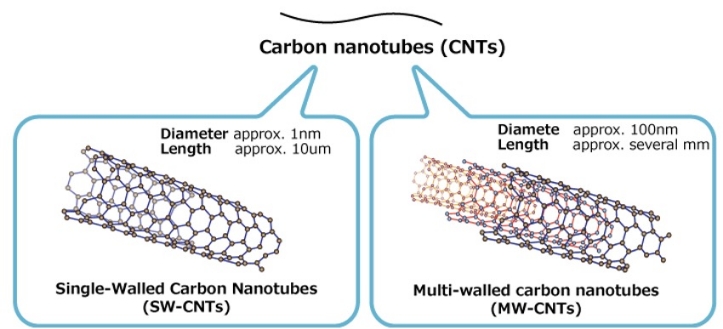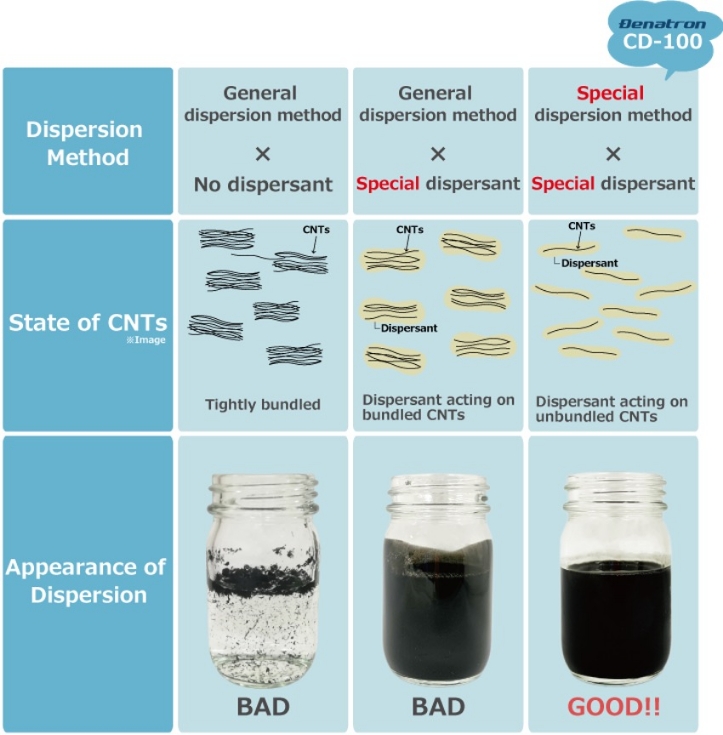DENATRON Museum / Get to know DENATRON
Dispersing Carbon nanotubes (CNTs)
HOME > DENATRON Museum > Get to know DENATRON > Dispersing Carbon nanotubes (CNTs)
One of the DENATRON nanocarbon Type-C products is based on Carbon nanotubes (CNTs).
This section describes the dispersion of carbon nanotubes (CNTs).

Carbon nanotubes (CNTs) is a tubular a honeycomb lattice of carbon atoms joined in a hexagonal arrangement (graphene).
In powdered form, strong pi-pi conjugate action and van der Waals attraction causes aggregation and bundling, and these bundles are difficult to unbundle.
Ordinary CNTs is dispersed by breaking up bundles and using dispersant to stabilize the broken up CNTs.
However, depending on the dispersion method and strength, the CNTs could be damaged, or attempts to break up and disperse the CNTs could fail. Creating a high quality liquid dispersion is not an easy matter. Dispersing Single-walled Carbon nanotubes (SW-CNTs) is said to be especially difficult compared to Multi-walled carbon nanotubes (MW-CNTs).
NCX has developed unique dispersion technologies and succeeded in producing “CD-100”, a liquid dispersion with stable pot life and excellent conductivity!
The CD-100 has an especially high level of dispersion stability, so various types of resins and solvents can be added to it.
The table below lists the features of CD-100.

We performed the following comparison on these three.
In this experiment, we prepared the following:
- A competitor’s aqueous CNTs dispersion
- A competitor’s alcohol CNTs dispersion
- DENATRON CD-100
We added water and alcohol to each and observed how the dispersion state of the CNTsC changed.
See the video for a detailed overview.
Use this easily compoundable CNTs dispersion to create advanced and multifunctional coatings by formulated with various additives!
Return to list of articles
